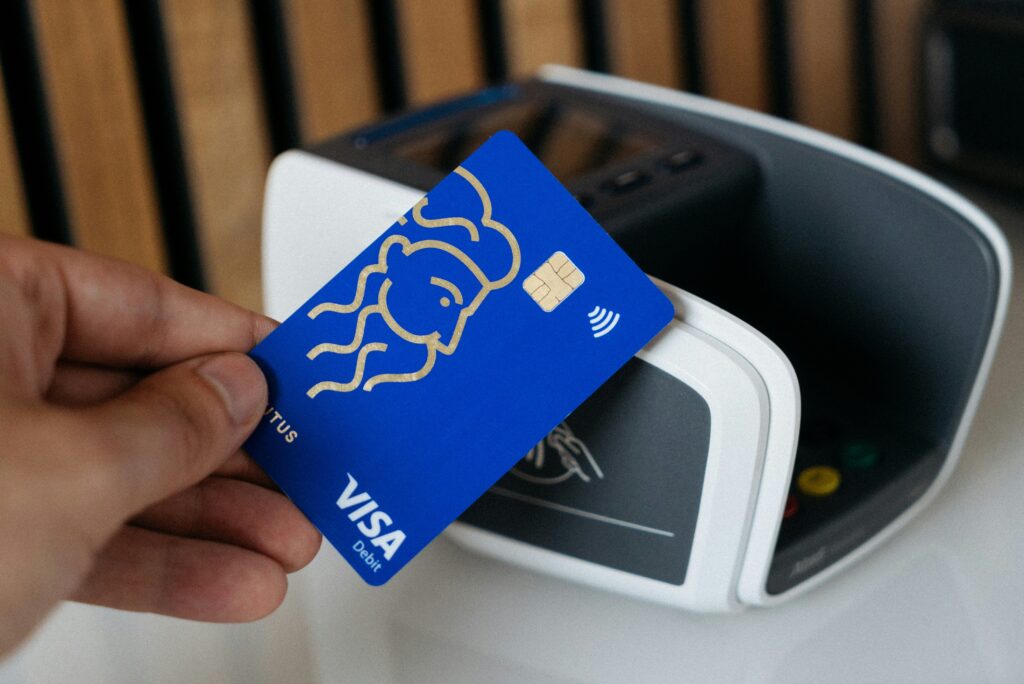Introduction
- Why Fall 2022 is an important intake
- Post-COVID travel context
- Why proper preparation matters
Step 1: Choosing the Right University
- Rankings vs fit
- Majors and research opportunities
- Location and lifestyle considerations
Step 2: Understanding the Application Timeline
- Admission deadlines for Fall 2022
- Standardized tests (TOEFL, IELTS, GRE, GMAT, SAT, ACT)
- Statement of purpose, recommendation letters
Step 3: Securing Your Visa (F-1, J-1, M-1)
- Visa types explained
- I-20 and SEVIS process
- Preparing for the visa interview
- Common mistakes international students make
Step 4: Booking Flights and Travel Preparation
- When to buy tickets for best prices
- COVID-19 rules and vaccination requirements in 2022
- Important travel documents checklist
Step 5: Packing Essentials for the U.S.
- Academic supplies
- Seasonal clothing
- Electronics and adapters
- Medicines and healthcare basics
- What NOT to pack
Step 6: Housing and Accommodation
- On-campus vs off-campus housing
- How to find roommates safely
- Lease agreements and hidden costs
Step 7: Banking, Money, and Budgeting
- Opening a U.S. bank account
- International credit/debit cards
- Budget planning for international students
- Scholarships and assistantships
Step 8: Healthcare and Insurance
- Why health insurance is mandatory
- Choosing the right student insurance plan
- Accessing U.S. healthcare system
- Mental health resources
Step 9: Adjusting to Academic Culture in the U.S.
- Classroom participation
- Group projects and plagiarism rules
- Building relationships with professors
- Writing and research expectations
Step 10: Social and Cultural Adjustment
- Making friends in the U.S.
- Joining student clubs and communities
- Overcoming culture shock and homesickness
Step 11: Work Opportunities
- On-campus jobs
- CPT and OPT explained
- Networking and internships
- Career fairs and LinkedIn tips
Step 12: Safety and Legal Awareness
- Campus safety tips
- U.S. laws international students must know
- Emergency contacts and support
Step 13: Life Hacks for International Students
- Transportation (Uber, buses, metro, campus shuttle)
- Food and grocery shopping on a budget
- Mobile plans and SIM cards
- Tech tools for productivity
Step 14: Travel and Exploration
- Exploring local cities
- U.S. holidays and traditions
- Affordable travel for students
Step 15: Long-Term Planning
- Graduate school pathways
- H-1B visa and work opportunities after OPT
- Staying connected to home country
Conclusion
- Motivation for students
- Emphasizing the life-changing journey ahead
Introduction
Studying in the United States has long been a dream for millions of students around the world. With its world-class universities, diverse culture, and abundant opportunities for research and employment, the U.S. remains one of the top destinations for higher education. Every year, international students travel across the globe to join prestigious programs, experience campus life, and prepare for successful careers.
The Fall 2022 intake was particularly important for international students. After two years of global disruption due to COVID-19, universities reopened their doors fully, welcoming students back to campuses. For many, this was the first time they were able to physically travel and study in the U.S. after months or years of online learning. With vaccination rules, travel restrictions, and new campus safety measures in place, preparation for Fall 2022 was different from any previous year.
This guide was designed to serve as a complete handbook for international students preparing to study in the U.S. Whether you are an undergraduate leaving home for the first time, a postgraduate focusing on research, or even a professional heading for advanced training, this article covers everything you need to know before boarding that plane. From visas and packing lists to academic culture and cultural adjustment, you will find all the essential information here.
Step 1: Choosing the Right University
Before applying for a visa or booking flights, the first step is selecting a university that matches your academic, personal, and financial goals.
Rankings vs. Fit
Many students focus solely on university rankings, but the best university for you may not be the one at the top of the list. Consider:
- Programs and Majors: Does the university offer the program you want at the right level?
- Faculty and Research: Are professors conducting research in your area of interest?
- Location: Is the university located in a big city (e.g., New York, Boston, Los Angeles) or a quieter college town (e.g., Ann Arbor, Madison, Gainesville)?
Lifestyle Considerations
- Climate: Do you prefer warm states like California and Texas, or are you comfortable with snowy winters in Minnesota or Massachusetts?
- Cost of Living: Housing and transportation in New York City or San Francisco is far more expensive than in smaller towns.
- Cultural Communities: Some areas have large South Asian, Chinese, or Latin American communities, which can provide comfort when adjusting.
Remember, the U.S. has over 4,000 universities and colleges. Take time to explore your options.
Step 2: Understanding the Application Timeline
Fall intake typically begins in August or September. Application deadlines usually fall between December and March of the previous year.
Standardized Tests
- English Language Tests: TOEFL, IELTS, Duolingo English Test (some schools began accepting this after COVID).
- Undergraduate Admissions: SAT or ACT (some universities waived them for Fall 2022 due to pandemic disruptions).
- Graduate Admissions: GRE (for many programs), GMAT (for business schools).
Application Materials
- Statement of Purpose (SOP): Explains your academic goals, why you chose the program, and your career aspirations.
- Letters of Recommendation: Usually from professors or employers.
- Transcripts: Official academic records from previous schools.
Staying organized with deadlines is crucial—missing one could mean waiting until the next year.
Step 3: Securing Your Visa (F-1, J-1, M-1)
To study in the U.S., most international students need an F-1 student visa. Others may use a J-1 exchange visa or an M-1 vocational visa.
The Process
- Receive an I-20 form (for F-1) or DS-2019 (for J-1) from your university.
- Pay the SEVIS fee online.
- Complete the DS-160 visa application form.
- Schedule and attend a visa interview at the U.S. embassy or consulate.
Visa Interview Tips
- Be clear and confident when explaining why you chose your program.
- Show that you intend to return home after your studies (ties to family, future career).
- Prepare financial documents proving you can cover tuition and living expenses.
Common Mistakes
- Providing incomplete financial information.
- Not knowing details about your program.
- Appearing uncertain about future plans.
Step 4: Booking Flights and Travel Preparation
Once your visa is approved, the next step is booking flights.
Best Time to Book
- Around 3–4 months before departure to find affordable prices.
- Many universities recommend arriving 2–3 weeks before classes begin to attend orientation.
COVID-19 Rules (for Fall 2022)
- Proof of vaccination was required by most airlines and universities.
- Negative PCR tests were often needed before boarding.
- Quarantine guidelines varied by state and university.
Travel Documents Checklist
- Passport with valid visa.
- I-20 form.
- SEVIS fee receipt.
- University admission letter.
- Vaccination certificate.
Step 5: Packing Essentials for the U.S.
Packing is one of the most stressful parts of moving abroad. Here’s what to focus on:
Academic Supplies
- Laptop with international warranty.
- Power adapters and converters.
- USB drives and portable hard disks.
Clothing
- Pack for all seasons. Many states experience both hot summers and snowy winters.
- Formal wear for presentations or interviews.
- Comfortable shoes for long walks on campus.
Medicines and Healthcare
- Prescription medicines with doctor’s note.
- First aid kit.
- Basic over-the-counter medicines (painkillers, cold medicine).
What NOT to Pack
- Too many books (buy or borrow in the U.S.).
- Cooking utensils (easy to find cheaply at stores like Walmart or Target).
- Large quantities of food (customs restrictions).
Step 6: Housing and Accommodation
Finding housing is a major decision.
On-Campus Housing
- Convenient and close to classes.
- Includes meal plans and utilities.
- Easier to make friends.
- More expensive than off-campus options.
Off-Campus Housing
- Often cheaper, especially if shared with roommates.
- More independence and choice of living style.
- Requires signing lease agreements (typically 12 months).
Tips
- Use official university housing offices or trusted platforms (Zillow, Apartments.com).
- Avoid scams by never paying deposits before seeing the apartment or signing a contract.
Step 7: Banking, Money, and Budgeting
Managing money is essential in the U.S.
Banking
- Open a student checking account at banks like Chase, Bank of America, or Wells Fargo.
- Some banks have special student offers with no fees.
Credit Cards
- Building a U.S. credit score is important.
- Start with a secured credit card if you have no history.
Budgeting
- Average living costs: $10,000–$15,000 per year (outside tuition).
- Rent, groceries, phone, transportation, and health insurance are the main expenses.
Scholarships and Assistantships
- Graduate students often receive teaching or research assistantships.
- Undergraduates may apply for merit-based scholarships.
Step 8: Healthcare and Insurance
The U.S. has one of the most expensive healthcare systems in the world.
Health Insurance
- Most universities require international students to buy a health insurance plan.
- Plans cover doctor visits, hospital stays, and emergencies.
Accessing Healthcare
- Visit the student health center for basic care.
- For emergencies, dial 911.
Mental Health Resources
- Counseling services are available on most campuses.
- International students often face homesickness and stress—seeking help is encouraged.
Step 9: Adjusting to Academic Culture in the U.S.
Classroom Participation
- Professors expect active participation.
- Asking questions is encouraged.
Group Projects
- Collaboration and teamwork are highly valued.
Plagiarism Rules
- Academic honesty is taken seriously.
- Always cite sources properly.
Relationship with Professors
- Professors are approachable.
- Office hours are for academic guidance.
Step 10: Social and Cultural Adjustment
Making Friends
- Join student clubs and cultural associations.
- Attend campus events.
Overcoming Culture Shock
- Initial excitement may turn into homesickness.
- Stay connected with family through video calls.
- Explore new hobbies to feel included.
Diversity
The U.S. is multicultural. Respect for differences in culture, religion, and identity is important.
Step 11: Work Opportunities
On-Campus Jobs
- Library, cafeteria, tutoring, or research assistant roles.
- Limited to 20 hours per week during classes.
CPT and OPT
- CPT (Curricular Practical Training): Allows internships during study.
- OPT (Optional Practical Training): 12 months of work after graduation.
- STEM students can extend OPT for 24 additional months.
Networking
- Use LinkedIn to connect with alumni.
- Attend career fairs organized by universities.
Step 12: Safety and Legal Awareness
Campus Safety
- Most universities have campus police and emergency systems.
- Safety apps and escorts are often available at night.
U.S. Laws
- Drinking age is 21.
- Drugs are illegal at the federal level.
- Respect local and state laws.
Step 13: Life Hacks for International Students
- Transportation: Learn bus and metro systems; ride-sharing apps are popular.
- Food: Cook at home to save money; Asian and ethnic grocery stores are common in cities.
- Mobile Plans: T-Mobile, AT&T, Verizon offer student plans.
- Tech Tools: Use apps like Google Calendar, Grammarly, and Zoom for productivity.
Step 14: Travel and Exploration
The U.S. is vast, with countless places to explore.
- Local Travel: Museums, parks, and cultural centers near your university.
- Holiday Travel: Thanksgiving, Christmas, and Spring Break are popular times.
- Student Discounts: Use ISIC cards, Greyhound buses, or Amtrak trains for cheaper travel.
Step 15: Long-Term Planning
Many international students hope to build careers in the U.S.
Graduate School
- Many students continue to Master’s or PhD programs.
H-1B Visa
- Work visa available after OPT.
- Highly competitive, requires employer sponsorship.
Staying Connected
- Maintain ties with home country through visits, online communities, and alumni groups.
Conclusion
Studying in the U.S. for Fall 2022 is a life-changing opportunity. Preparation is the key to making the most of your experience. From choosing the right university to adjusting to cultural differences, every step matters. This journey may feel overwhelming at first, but it will help you grow academically, professionally, and personally.
Remember, thousands of international students before you have taken this path and thrived. With resilience, open-mindedness, and careful planning, you too can turn your American education into a stepping stone toward a bright future.




